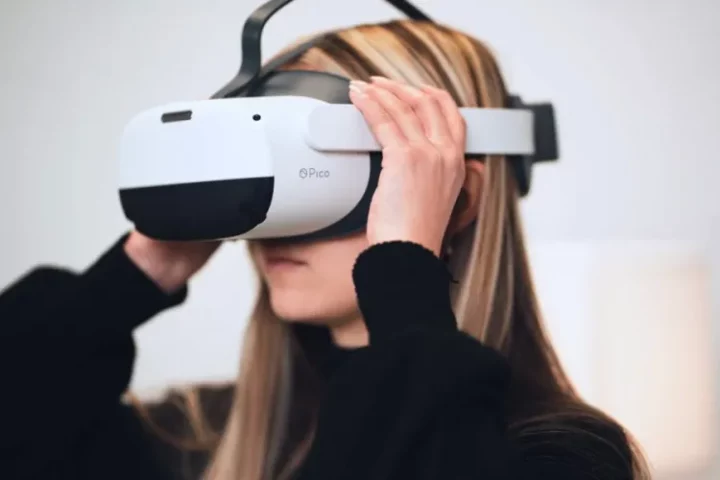If you want to learn how to create virtual reality (VR) content, look no further!
VR content is created through an authoring tool used by a developer or development team. VR content is created through these three steps.
- Step 1: Create an outline, program goal, and detailed flowchart for the program. This establishes the steps a learner will experience and where the visual elements will be placed.
- Step 2: Create assets that meet your learning goals, like 3D modeling, 2D graphic design, video elements, and voice over.
- Step 3: The developer loads these assets into the authoring tool, writes custom C# scripts, and makes the project playable on its intended platform (VR headset, computer, web, etc.).
Organizations can choose to have their VR content developed in-house with their own team and equipment, or outsource this work to an external source.
Among high-consequence industries, 45% of people consider VR simulations important for achieving business goals.
With VR training on the rise, the ability to create custom VR content has never been more critical. When developing a VR learning program, creating content in-house or through an external vendor can give your program a customized edge that ensures your organization’s specific learning goals are met.
You may be asking yourself, “How can I create my own VR content?”
In this article, we’ll dive into what an authoring tool is, the three steps to creating VR content, and two real-life examples of how to create VR content.
What Is A VR Authoring Tool?
A VR authoring tool develops content, resources, and learner support and assessment for a VR program. VR authoring tools combine the visual elements, like 3D objects, 2D images, and 2D/3D texts, with programmed scripts that tell the headset and controllers what to do when learners interact in the virtual environment. These custom C# scripts provide interactions within the virtual environment and build the project into a playable program.
The two most powerful and notable VR authoring tools are Unity and Unreal. Professional developers with high levels of training and knowledge use these two tools because they aren’t always intuitive; however, the quality and depth of the VR experiences they can create are vast, making their use worthwhile.
How To Create VR Content
Creating VR content typically involves these three steps.
- Step 1: Create an outline and goal, then turn it into a detailed flowchart with clear learning objectives. In this stage, instructional designers and L&D teams craft a flowchart that maps out the steps learners will experience and understands how visual elements will create a simulated environment.
- Step 2: Create assets that meet learning goals. These assets include 3D modeling, 2D graphic design, video elements, and voice over. During this step, assets must be created that align with learning goals.
- Step 3: Developer writes custom scripts and makes the content playable through authoring tools. The last step in creating VR content is developing custom C# scripts for interactions that build the project. This way, the project becomes playable on the intended platform (VR headset, computer, web, etc.).
These three steps can be developed in-house or outsourced. The main differences are saving time and having access to expert experience. If you are building a team in-house, you’ll need a developer, programmer, and 3D artist at minimum. When you outsource, you can access more experienced professionals, but may have to pay a higher price. Whether you create a program in-house or outsource, it’s important to develop a VR program that aligns with your custom learning goals.
Two Examples Of Creating VR Content
In-House 360° VR
Your organization can create its own VR content by recording a 360° video in-house. This is the simplest way to create VR content. By headset, desktop, or mobile device, 360° VR immerses your learners in an environment made from a recorded video. This video can be shot with an omnidirectional camera that provides a 360° view, which your organization may already own.
Users are placed in a fixed location, can look around them, watch the recorded video, and make selections through hotspots and interactive buttons. For example, learners can develop their soft skills by navigating different social styles during HR training or work through troubleshooting products and repairing equipment by outlining step-by-step guides.
When shooting your 360° video, you should consider the following questions:
- Is this location relevant to the learner’s experience?
- How can you prompt the learner to look around?
- How will learners access this video?
